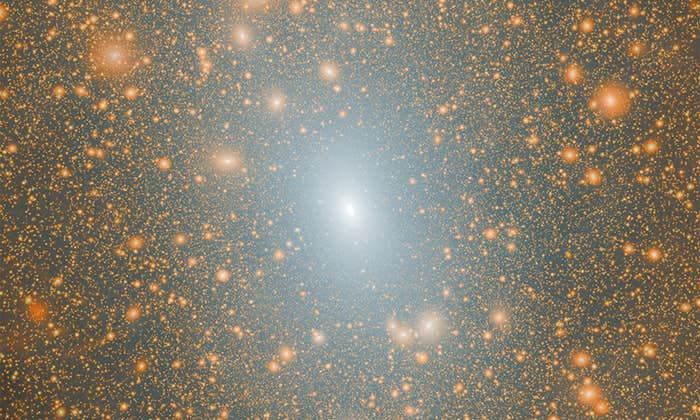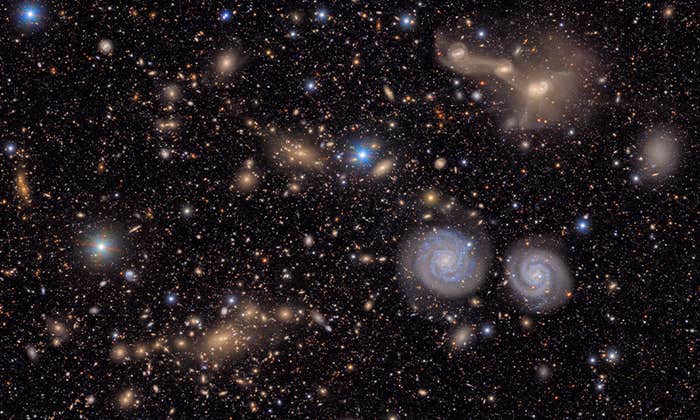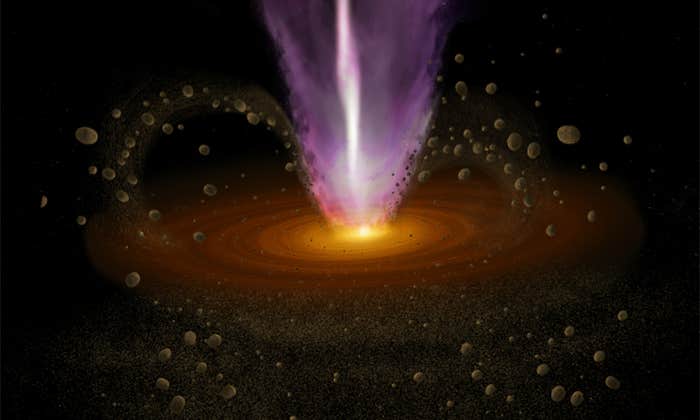The history of human exploration has always been tied to the search for a destination. Space travel is no different: The Apollo program, which ferried humans to the moon, was not only a scientific and technical achievement, but also an exercise in planting flags and leaving bootprints. Yet proposals are now brewing to launch missions to empty dots in the vastness of space, albeit ones with very special properties.
Take any planet in orbit around a star, or any moon that spins around a planet. In each of these systems there will be five spots, arranged in a geometrical configuration that resembles the points of an archer’s drawn bow, where the combined gravitational fields and centrifugal force of the bodies’ rotation cancel out. These are zones of hidden equilibrium, gravitational lacunae amid the ceaseless movement of celestial bodies. The niches are known as Lagrange (or Lagrangian) points, named after Joseph-Louis Lagrange, the French-Italian mathematician whose 1772 essay identified two such locations in the Earth-sun system.
If a satellite or an asteroid at just the right energy finds its way into the zone around a Lagrange point, it will stay stationary relative to the other two bodies as they go about their orbital business, as if snagged on a knot on a piece of string. The caught object loses very little energy while it hovers in place. If it is a spacecraft, this means it need only expend a tiny amount of fuel to stay aloft—as opposed to being in regular orbit, in which colliding with atmospheric particles creates drag and demands fuel to “top up” the orbital path.
The name “Lagrange points” may be a bit of a misnomer, as they vary in character and stability. Stars and planets can be thought of as gravity wells; think of Lagrange points as hills. To take the Earth-sun system as an example, point L1, nearly 1 million miles from Earth in the direction of the sun, is precarious. An object at that location can easily fall out of equilibrium, like a ball balanced on the pointy tip of a mountain, with the forces of the two bodies constantly tugging at its position. Rockets would be required to push the object back into place. L2 and L3—one on the far side of the Earth, the other on the far side of the sun—are more stable, like flat-topped plateaus. L4 and L5, at 60 degrees behind and ahead of the Earth as it orbits the sun, are the most secure of all. An object suspended there would not fall out; it would be like being at the bottom of a deep, jellybean-shaped crater at the summit of an extinct volcano. Here you can see a representation of the asteroids, in blue, that cluster at the L4 and L5 points around Jupiter.
These are zones of hidden equilibrium, gravitational lacunae amid the ceaseless movement of celestial bodies.
We are just beginning to exploit the possibilities of these obscure notches in space: for manned missions, mid-space launching pads, cozy spots for sensitive telescopes, and way stations on a road to the far edges of the solar system.
In September this year, the European Space Agency (ESA) plans to launch the Gaia space observatory out to the Earth-sun L2, 932,000 miles from Earth in the opposite direction of the sun. Away from the degrading effects of the Earth’s atmosphere and out of the troublesome heat of our star, Gaia’s sensitive equipment will last better at a Lagrange point than it would in regular orbit. It will also stay on the “night” side of Earth, and so get a better vista of the cosmos. But Gaia will not be the first to occupy Earth-sun L2. In fact, the ESA’s Herschel space observatory recently vacated the spot after a four-year stint, as did China’s Chang’e-2 probe in April 2012. These space probes do not remain still at L2—they oscillate around the point in movements known as librations.
Even more provocative is the idea that Lagrange points could offer a stable toehold for deep-space colonization. In theory, it would be possible to blast a load of construction materials to a Lagrange point and leave it there, suffering very little strain and with a low risk of drifting away, while further provisions made their way from Earth. Mid-space building and resupply would be easier than if a craft were in regular orbit.
NASA is investigating the prospect of setting up a manned space station at the L2 of the Earth-moon system, 40,000 miles past the far side of the moon, farther away than a human has ever traveled. In a presentation convened by NASA engineers and academics this year, Brand Griffin, an engineer and contractor for NASA’s boundary-pushing Advanced Concepts Office, proposed repurposing part of an existing rocket system to build a space station that could rest comfortably at the L2 niche. The project, currently named “Skylab II,” draws its name from the United States’ first space station, which orbited the Earth from 1973 to 1979. “I think I’ve discovered what it means to be a visionary at NASA. You gotta look backwards. And this one is a big look backwards—40 years, in fact,” said Griffin.
NASA could use Skylab II’s Lagrange point as an outpost for more exotic and far-flung missions, Griffin suggested. Unlike rockets that push off from the surface of Earth, craft that launch from a Lagrange point do not have to burn through a huge amount of fuel to escape the gravitational pull of a planet. Instead, they can slip almost effortlessly between Lagrange points, along a fuel-efficient gravity-path that is sometimes called, somewhat comically, the Interplanetary Superhighway.
Since Lagrange points are unstable, to a greater or lesser degree, as a spacecraft “falls out” of one it could be placed, theoretically, on a trajectory that would efficiently scoop it up into a second Lagrange point. “These are not the fastest paths, but they save energy,” says Andrew Johnston, a geographer and one of the Smithsonian curators who built the new “Time and Navigation” exhibition at the National Air and Space Museum. He likened the process to a ship traveling with the ocean’s currents on the open seas—a fuel-efficient option if one is not in a hurry to reach one’s destination.
The points themselves could even become sites for refueling stations or workshops on this network of deep-space gravity tubes. “[A Lagrange point] would be a good place to put factories to build things, moving raw materials from asteroids,” says Martin Lo, a spacecraft trajectory expert with the Jet Propulsion Laboratory. He was one of the brains behind the design of NASA’s 2001 Genesis mission, which used the low-energy pathway between L1 and L2 in the Earth-sun system to gather samples of solar wind. “If we put a space station in one of these low-energy ‘orbits,’” Lo continues, “we can essentially go to various regions of the 2-million-kilometer-radius sphere around the Earth with almost no fuel.”
But it can take weeks, months, and even years to move between Lagrange points, Lo warns. Wending your way on the Interplanetary Superhighway between Saturn and Jupiter, for example, would require around 100 years; NASA’s Voyager 1 spacecraft, which made the trip in 1979-1980, did it in 21 months with fuel-guzzling rockets. Even with the more manageable time frames for the gravity tubes closer to Earth, the slow pace of movement is not ideal for delicate humans, who are at greater risk in deep space from exposure to cosmic rays and solar radiation than they are in lower orbits.
Moreover, it’s hard for even today’s computers to map out Lagrangian byways in three-dimensional space, simply because of their complexity. Lo points out that the layout of the Superhighway obeys the arcane dictates of chaos theory, so minute differences in a craft’s velocity and direction can affect the path it will wend through the solar system. Planning the precise path on which a spacecraft will drift along gravity tubes may be beyond us.
Wending your way on the Interplanetary Superhighway between Saturn and Jupiter, for example, would require around 100 years.
Even though it’s cheaper to set off from one after you arrive, getting to a Lagrangian point is prohibitively expensive. To propel a rocket to the Earth-moon L2, as Skylab II’s proponents want to do, would cost roughly $2 billion per launch. This won’t be like the 115 shuttle flights it took to assemble the International Space Station, said Griffin. Astronauts would not be able return rapidly to Earth, and resupplying the station would be costly and infrequent.
Any humans who live at a Lagrange point would face other health risks, notes astronomer Phil Plait, who writes the “Bad Astronomy” blog for Slate. People need gravity—the very thing that Lagrange points lack—to avoid bone and muscle problems, as studies of astronauts in the near-weightless conditions of orbit have revealed. It may be possible to artificially create gravity by rotating massive space stations around their own axes, but the viability of this option is questionable. Moreover, as for the Interplanetary Superhighway, “radiation is a big issue,” Plait says.
A more subtle, but no less stubborn, barrier is the intellectual legacy of exploration, according to Dan Lester, a research fellow at the University of Texas at Austin’s astronomy department. “How can we send people to Lagrange points, [when] there’s nothing there?” he asks, describing opposition to such deep-space missions. Early humans roamed the plains in search of territory and sustenance; early-modern Europeans struck out across the oceans in search of the “New World.” Today, tourists hop continents to see the leaning tower of Pisa or go scuba diving off Australia’s Great Barrier Reef. “The historical picture of exploration is about putting footprints somewhere,” Lester adds. “It involves going to a rock where there will be an island or a continent. It has to be a rock. It has to be a place you can stand on.” Thanks to this baggage, Lester claims a Lagrange point in empty space doesn’t feel like a “real” place to many.
We might overcome these preconceptions, he notes, by thinking about Lagrange points as destinations for “remote exploration”: manned monitoring stations for controlling robots on the surface of a planet. “Telerobotic hands and fingers would have far more dexterity than an astronaut in a spacesuit would,” Lester says. “If you want to pick up a rock and turn it over, and scratch the surface of it, it’s easier with a telerobot than an astronaut in thick gloves.” Posting a manned spacecraft at a Lagrange point would allow a mission to remain in one spot above the surface of a significant astronomical body and stay in constant contact with a Curiosity-like rover on the surface. Unfortunately, it’s not likely to be Mars: The planet’s tiny moons make for very weak Mars-moon Lagrange points, and the distance of the preferred Mars-sun Lagrange point is too far away for remote exploration, according to Lester.
Exploration need not be exclusively about finding a spot to leave one’s mark. Advocates of Lagrangian travel suggest that it should also involve venturing into an uncharted area—whether in the ocean, or in deep space—in a quest for expanding knowledge. Just as 19th-century explorers mapped the ocean’s currents in order to conceptualize the globe, finding routes between Lagrange points could help us plot our place in the solar system, taming its immensity in our minds. Once we are comfortable finding our way around the Lagrange points between the Earth and moon, or the Earth and sun, perhaps our confidence will increase and lead us to try more daring voyages—to Mars, and beyond.
Elizabeth Howell is an award-winning space and science journalist based in Ottawa, Canada. Her work also appears in SPACE.com, Universe Today, LiveScience, Space Exploration Network and All About Space, among other publications.


























